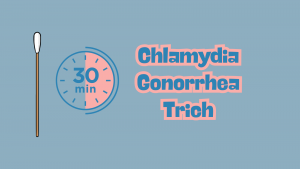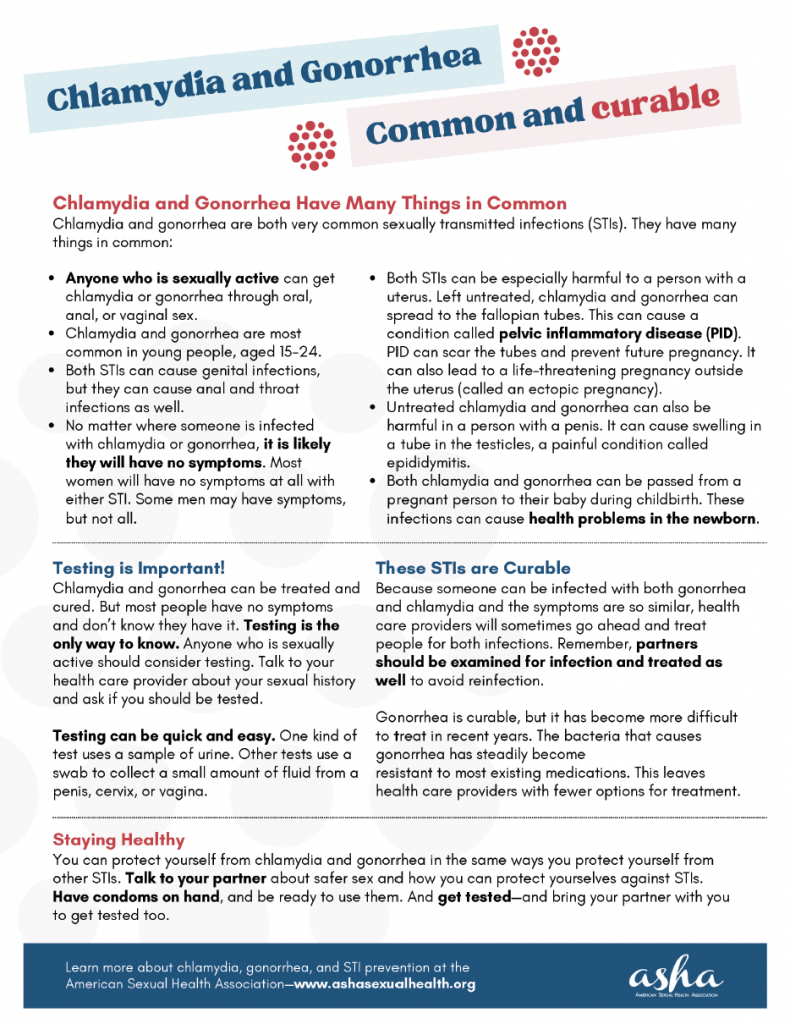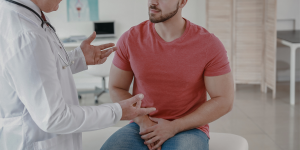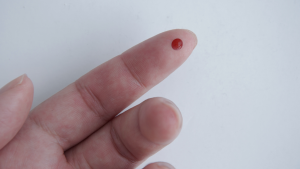What are the symptoms of gonorrhea?
Sometimes, there are no symptoms. Many people with gonorrhea are asymptomatic, which means they don’t show any symptoms of infection.
If there are symptoms, they typically show in two days to five days in males, with a possible range of one to 30 days. In females, symptoms develop within 10 days of infection.
Possible symptoms in males:
- Yellowish-white discharge from the penis
- Burning or pain when urinating
- Urinating more often than usual
- Pain or swelling of the testicles
Women are usually asymptomatic, but might experience:
- Abnormal discharge from the vagina that is yellow and sometimes bloody.
- Burning or pain when urinating
When the infection spreads to the fallopian tubes, some women still have no signs or symptoms. Others may have one or more of the following symptoms, which can be a sign that the infection has progressed to pelvic inflammatory disease (PID): lower abdominal pain, lower back pain, pain during intercourse, bleeding between menstrual periods, nausea, fever.
Rectal, Anal and Throat Infection
It is possible to have a rectal or anal gonorrhea infection. In about 90% of cases, there are no symptoms. If there are symptoms, they may include anal or rectal itching, discharge, and pain during defecation (pooping).
Gonorrhea infections of the mouth and throat also usually have no symptoms, but a person may experience soreness and redness in the mouth or throat. A culture test is used to determine if gonorrhea is causing these symptoms.
How is gonorrhea diagnosed?
Since symptoms may not be present, the only way for a person who has been at risk for gonorrhea to tell whether they’re infected is to be tested. There are different testing options for gonorrhea such as urine or swab tests. It may be helpful to speak to your healthcare provider about what testing options they have available.
Yearly gonorrhea testing is recommended for all sexually active women younger than 25 years, as well as older women with risk factors such as new or multiple sex partners, or a sex partner who has a sexually transmitted infection (STI). Even when women do have symptoms, they can be mistaken for a bladder infection or other vaginal infection, so that’s testing is important.
How is gonorrhea treated?
Currently, the recommended treatment for gonorrhea is a single injection of an antibiotic (ceftriaxone).
Patients with gonorrhea should also be treated for chlamydia (unless testing has ruled out chlamydia infection). People infected with gonorrhea are often also infected with chlamydia, so treatment is often prescribed for chlamydia as well, since the cost of the treatment is less than the cost of testing for chlamydia.
Here are some important points about treatment:
- All medications should be taken as directed.
- All partners should be examined and treated.
- Sexual contact should be avoided until the patient and all partner(s) have been treated and cured.
- Persons with symptoms after treatment should be tested again.
- Persons who were treated with a non-recommended course of antibiotics (sometimes done if a patient is allergic or the drugs are unavailable) should also be tested again one week after treatment, even if they have no symptoms.
- Infections detected after treatment with the recommended medications more commonly occur because of reinfection rather than treatment failure.
What does it mean for my health?
If untreated, gonorrhea can cause complications. Untreated gonorrhea infections in men may lead to:
- Prostatitis: inflammation of the prostate gland
- Scarring of the urethra, which can cause a narrowing or closing of the urethra
- Infertility
- Epididymitis: inflammation of the epididymis, the elongated, sperm-carrying, cord-like structure along the posterior border of the testes
Untreated gonorrhea infections in women may lead to:
- Pelvic inflammatory disease (PID): PID can develop from several days to several months after infection with gonorrhea. Left untreated, PID can cause infertility.
- Chronic menstrual difficulties
- Postpartum endometritis: inflammation of the lining of the uterus after childbirth
- Miscarriage
- Cystitis: inflammation of the urinary bladder
- Mucopurulent cervicitis: characterized by a yellow discharge from the cervix.
About 1% of people with gonorrhea may develop disseminated gonococcal infection (DGI), which is sometimes called gonococcal arthritis. DGI occurs when gonorrhea infection spreads to sites other than genitals, such as the blood, skin, heart, or joints.
Symptoms of DGI include fever, multiple skin lesions, painful swelling of joints (arthritis), infection of the inner lining of the heart, and inflammation of the membrane covering the brain and spinal cord (meningitis). DGI can be successfully treated using antibiotic regimens similar to those recommended for treating uncomplicated gonorrhea.
Gonorrhea can be passed from mother to newborn as the baby passes through the infected birth canal. Complications in infants include blindness, from untreated eye infections.
How can I protect myself against gonorrhea?
There are many ways to prevent gonorrhea and other STIs, including mutual monogamy (having sex with only one uninfected partner), using condoms for vaginal and anal sex, and condoms or other barrier methods during oral sex.
How do I tell my partner?
Telling a partner can be hard, but keep in mind that most people with an STI don’t know they have it. It’s important that you talk to your partner as soon as possible so she or he can get treatment. It is possible to pass gonorrhea back and forth, so if you get treated and your partner doesn’t, you may get infected again.








